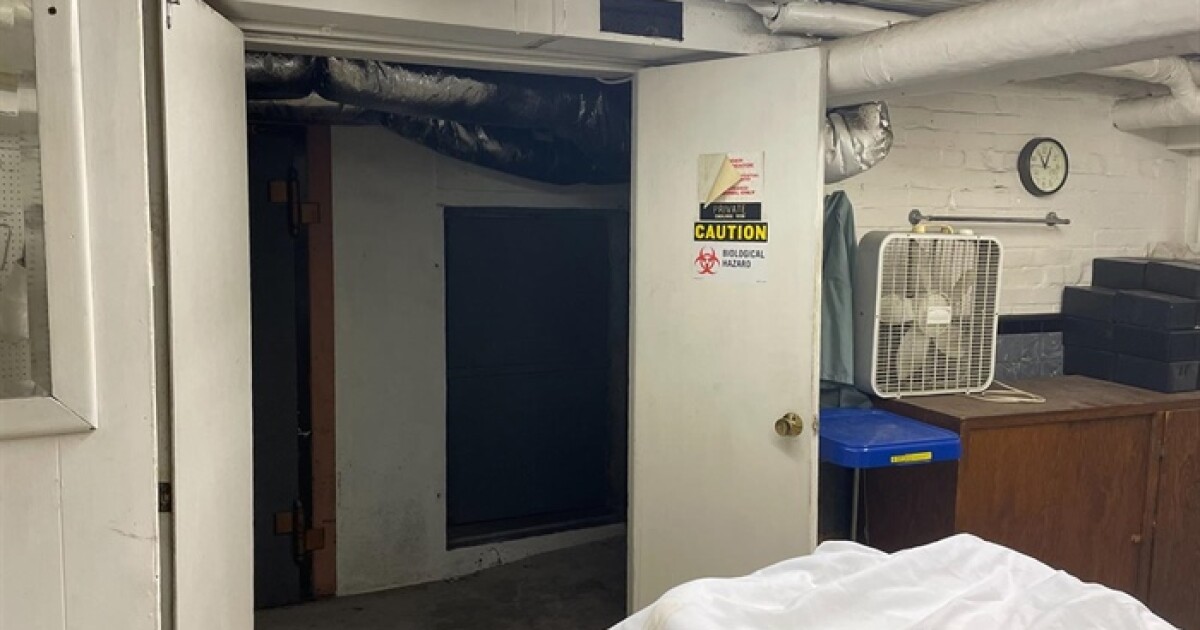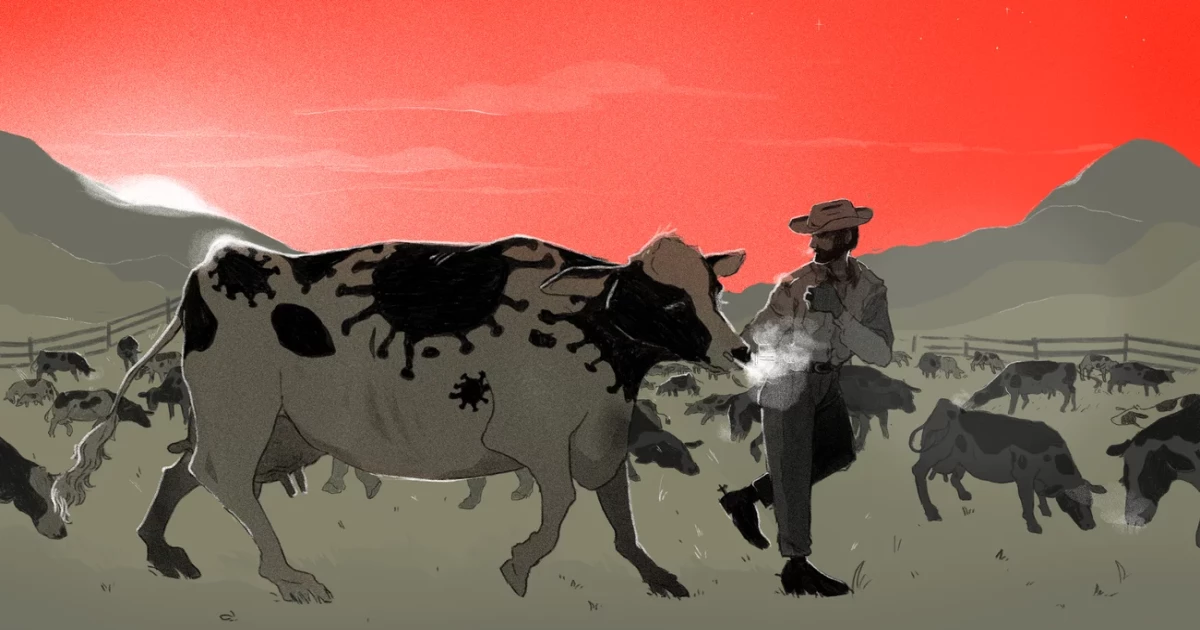Business
St. Louis Zoo to build $40-million interactive children’s area

The St. Louis Zoo plans to build a new immersive, $40 million space for children that would open in 2026.The new area, called Destination Discovery, would replace the current dinosaur installation and former children’s zoo. Construction begins next year.The zoo closed its Emerson Children’s Zoo in 2020 because of the coronavirus pandemic. It had been open for 51 years and was designed to allow kids to climb on playground equipment and pet animals.Now, the zoo has reimagined the area as an up-close opportunity for children to interact with animals and their habitats, said zoo director Michael Macek. The exhibits will change seasonally and use augmented reality and multimedia to serve children with various abilities.Destination Discovery will feature a wildlife overlook, underground prairie dog cities, freshwater wilderness, water play area, flamingo habitat, network of tree houses connected by overhead tunnels, walkthrough aviary and an education building.Several species of animals will live in the new area, including river otters, alpaca, babydoll sheep and large rabbit-like mammals called Patagonian maras.
Britny Cordera
/
St. Louis Public RadioZoo officials on Friday show off a pair of babydoll sheep, one of the species that will live in the St. Louis Zoo’s new children’s space.
The project will be funded by a $15 million lead gift from the Henry A. Jubel Foundation, with the rest of the money coming from donations and other philanthropic sources.Melissa Jubel Markwort, the executive director of the Jubel Foundation, said her family is proud to help fund Destination Discovery.“My family visits the zoo regularly. My daughter loves everything about the zoo, especially seeing the animals,” she said. “We attend all the wonderful events throughout the year. It truly holds a special place in our hearts.”When the former children’s zoo closed in 2020, Markwort said her family knew immediately that they wanted to help develop a new one.“Hearing the plans for the future made our family even more excited to be a part of reimagining this wonderful space that has meant so much to us over the years,” she said.The new space will cover nearly 3 acres at the zoo’s Forest Park facility. Right now, the site is filled with a temporary exhibit with life-size statues of dinosaurs, which will remain open until Nov. 5.Zoo officials met with 20 families from different racial identities and backgrounds over a period of two years while developing the project design to ask what they would want to see in a children’s area. Some of those families had members with disabilities, and others had never visited the zoo before.Macek said he hopes Destination Discovery will inspire the next generation of conservationists. “The project will include stories that reflect how animals are like us and how they have unique families just like us.”Macek said closing the children’s zoo in 2020 was one of the hardest decisions he made in his career, but now the St. Louis Zoo will have a space for children once again.“Thanks to the generosity of the Jubel Foundation, before I end my career I’ll be able to open it up again,” he said.
Business
New owner of vacated Centralia funeral home makes a startling find

In the basement of a Centralia funeral home in a dark hallway off the embalming room, tucked inside a nook behind two steel plates and a door, a visitor found three disembodied, neatly wrapped human legs, two of them marked with names and dated to the 1960s.The discovery stunned property owner Cindy Hansen, who had been cleaning up at the site of the former Moran Queen-Boggs funeral home for weeks. After all, she’d seen her last tenant evicted, his funeral director license suspended for the home’s filthy conditions – which included a dead rat in a stairwell.But as the shock dissipated on what first appeared to be a grisly find, a more mundane explanation materialized – the legs were likely the result of amputations, stored away decades ago until their owners died and they could be reunited and interred together, said Jay Boulanger, who has operated a funeral home in Highland for decades.“In those days, hospitals didn’t treat that as medical waste and cremation wasn’t popular then, so they just embalmed them and held on to them. Sometimes, people don’t get them, so they just stay,” Boulanger said.The discovery was made at the former funeral home operated by Hugh Moran in recent years, but he surrendered his license in March after state regulators found his facility in deplorable condition. But the hidden nature of the room and the fact that two of the legs were dated decades before Moran operated the facility indicate he was not involved in placing them there.Moran vacated the building last month, and Hansen began scrubbing and filling two large dumpsters with trash. After weeks of work, Hansen was seeing progress.Two casket salesmen came to pick up a display last week and asked her for a tour of the historic home with ornate oak woodwork and stained-glass windows, built by a cigar magnate in the late 1800s at the corner of South Elm and East Second streets in Centralia.On the tour, one salesman kept returning to that steel door in the dark hallway just off the embalming room.“Finally, he got a pair of pliers and turned the bolt to open it,” Hansen said. “There was another plate, so he opened that, too. Then, he got to the door and looked in. He backed up and said, ‘There’s legs in there.’”The three stood for a moment, then closed the door, returned the plates, and pondered what to do next.“I was completely freaked out,” Hansen said.But her shock at the situation did not raise any immediate response. She called the Illinois State Police, who called the Marion County coroner, who advised her to lock up when she left on May 7 and they would get back to her. The legs remained at the funeral home as of Tuesday, but the coroner said he will be getting them soon, Hansen said.In late February, three days after Capitol News Illinois sent questions to the department about an unanswered December 2023 complaint that the embalming room looked “like something from a scary, filthy, freak show,” the Illinois Department of Financial and Professional Regulation inspected the building.Inspectors didn’t disturb the steel plates blocking the nook with the legs, but they did find that Moran had maintained the embalming room in “extremely unsanitary conditions,” and he agreed to surrender his funeral director license permanently. Photographs of the room submitted with the complaint depicted a water leak, piles of dirty laundry and medical waste, along with the dead rodent.The conditions at Moran’s funeral home became public within months of a discovery that a Carlinville funeral home provided the wrong ashes to at least 80 families, spawning lawsuits and legislation.Sen. Doris Turner, D-Springfield, introduced legislation called “Reestablishing Integrity in Death Care Act” after that discovery resulted in at least nine exhumations, including five from Camp Butler National Cemetery in Springfield. No criminal charges have been filed against the funeral director responsible for those remains, August Heinz.Senate Bill 2643 codifies best practices already in place by most funeral homes, mandating that a unique identifier must be put on the deceased’s body and any other associated human remains. Under the proposal, a director must also document the chain of custody for all bodies and human remains.The bill also mandates that the state must respond to complaints within 10 days and gives authority to remedy the complaints, including inspecting the funeral home premises.That bill is awaiting a vote in the House.Clean-up at the former Moran-Boggs continues.But the name on the sign outside will soon change. Funeral Director Vonda Rosado will take over and change the name to Maxon-Rosado Funeral Home, the same as her other funeral home in DuQuoin. She plans to hire a professional to clean the embalming room.“We want to restore the history and integrity of this beautiful facility,” she said.Capitol News Illinois is a nonprofit, nonpartisan news service covering state government. It is distributed to hundreds of newspapers, radio and TV stations statewide. It is funded primarily by the Illinois Press Foundation and the Robert R. McCormick Foundation, along with major contributions from the Illinois Broadcasters Foundation and Southern Illinois Editorial Association.
Business
Illinois State Vet: Bird flu no threat to milk or food supplies

Two weeks after the U.S. Department of Agriculture implemented mandatory testing and reporting for interstate movement of dairy cattle in response to the spread of bird flu within the nation’s livestock sector, there are still no confirmed cases of the H5N1 influenza virus in Illinois.This is according to Illinois Department of Agriculture State Veterinarian Mark Ernst, who said dairy cattle producers were asked to implement safety protocols to prevent spreading the strain of highly pathogenic avian influenza [HPAI], whose presence has been detected in the nation’s milk supply.“H5N1 was first detected in livestock in Texas. The thought is that they were exposed to perhaps wild birds, which were able to transmit it over to cattle,” said Ernst, a Washington, Illinois, native who has served as state veterinarian for about the last 20 years. “In Illinois, we have not had any detections so far in our dairy herd. There are nine other states that have had detections on 36 premises.”There have been no confirmed U.S. detections of H5N1 in livestock reported since the USDA issued the mandatory testing and reporting protocol in late April, said Ernst, adding mortality rates among infected livestock have been low to non-existent.“It seems the cows recover over a period of time, though it may take upwards of a month,” said Ernst. “They do come back in their milk; however they don’t appear to be milking at a level where they were before they became infected.”
Illinois Department of Agriculture State Veterinarian Mark Ernst.
Illinois milk producers have been stepping up their biosecurity measures and limiting farm visitors since the H5N1 outbreak gained momentum several weeks ago while monitoring for telltale signs of the virus in their cattle.According to guidance issued to dairy cow producers on Tuesday, the USDA mandates that producers report animals with the following clinical signs to their state veterinarian immediately: decreased herd level milk production; acute sudden drop in production with some severely impacted cows experiencing thicker, concentrated, colostrum‐like milk; decrease in feed consumption and lethargy, dehydration and fever, among other symptoms.However, some cattle may present asymptomatically yet still harbor the H5N1 virus.“You’ve got to be really careful right now introducing new stock to the herd. It would be advisable to isolate incoming animals,” said Ernst. “The other thing that applies to more than just H5N1 is good biosecurity. You’ve got to limit farm traffic to essential traffic, and have good disinfectant cleaning of equipment and buildings. You also must limit the access of wildlife to feed sources and water sources.”Scientists are working to discover the pathway the virus takes in infecting cow milk. Reuters reports scientists suspect the virus can spread between cattle during the milking process, either through contact with infected equipment or with a virus that becomes aerosolized during cleaning procedures.“For whatever reason, the virus has had an affinity, more or less, for the udder and for milk,” Ernst said. ‘Fortunately, pasteurization has shown so far to be effective at destroying the virus in milk. The consumption of pasteurized dairy products doesn’t seem to be a risk at all to the public.”An IDOA news release noted the U.S. Food and Drug Administration has announced the commercial milk supply is believed safe due to the pasteurization process that destroys bacteria and viruses in milk. Protocols also are in place to destroy milk from affected dairy animals, according to Illinois Department of Public Health Director Dr. Sameer Vohra.“IDPH prioritizes the safety of our milk supply as well as the Illinoisans who work with cattle and poultry,” said Vohra. “Please note that pasteurized milk is safe, but we strongly recommend that Illinoisans avoid any unpasteurized raw milk products at this time based on the potential risk of infection.”The virus seems to be contained exclusively to dairy cattle at this point, Ernst observed. “At this point in time, there have been no reports of the virus in beef cattle. That could change; this is evolving and we’ve got to be vigilant.”Though the risk to livestock and the nation’s milk and food supplies may be nominal, the Center for Disease Control reported on Wednesday that the first case of human H5N1 infection has been confirmed in a Texas dairy worker.While the current public health risk is low, the CDC is watching the situation carefully and working with states to monitor people with animal exposure. In addition, the CDC is also beginning to monitor wastewater for signs of the virus and will issue a public report soon.Illinois is home to more than 600 dairy farms with 73,000 cows or calves, according to the USDA National Agricultural Statistics Service.
Business
University City entrepreneurs bake for college and a cause
For veteran bakers and baking novices alike, perfecting the classic chocolate chip cookie is no simple feat. The perfect bite is a confluence of textures, an artful balance between salty and sweet and slightly bitter, all of which come to fruition with quality ingredients and impeccable technique.Maya, 11, and Nadia Turner, 13, have not only come to the perfect recipe, but are sharing their confections with loyal customers. The University City sisters are the founders of Chocolate Girls’ Cookies and have been selling cookies since 2019.
Chocolate Girls’ Cookies signature chocolate chip cookie. The sisters
The Turners were inspired to form the LLC after seeing kids their age on TV.“I really wanted to be different,” said Maya. “There were no kids at my school who had their own business and I wanted to be the first. We watched Shark Tank and we saw kids on there and I was like, ‘I want to be in Shark Tank.’”The cookie company was also born out of the girls’ love for baking at an early age. Their mother, Shelly Williams, would bake cookies for Maya and Nadia when they were little. Over time, the girls adapted their great-great-grandmother’s recipe, found willing taste testers, and tweaked the recipe based on the feedback they received.“We thought we had something just based on the taste and the feedback that we had,” said Michael Turner, Nadia and Maya’s father and Chocolate Girls’ Cookies’ manager. “We passed out cookies at my job — I had a Ziploc bag [of cookies] — and a guy cupped his hands and asked for the crumbs. That’s when I was like, ‘Girls, we’re really onto something.’”
Maya and Nadia with their father and Chocolate Girls’ Cookies’ manager, Michael Turner. After overwhelmingly positive feedback from his coworkers on the girls’ cookies, Turner realized Maya and Nadia had a promising future in the cookie business.
Proceeds from selling the sweet treats go toward Maya and Nadia’s college fund. Some of the earnings are also set aside for a cause that’s important to the family. The girls’ merch features their company name with cookies in place of O’s and a pink ribbon as the L in “chocolate.”“Our grandmother passed away from breast cancer awareness, so we put [the ribbon] in our hoodie,” said Nadia, who came up with the design. “We donate some [of the] money to breast cancer awareness.”Previously, Chocolate Girls’ Cookies desserts were sold at the Soulard Farmers Market and at St. Louis Children’s Hospital. Now you can find their cookies in select movie theaters, Barnes Jewish Hospital and on their website: www.chocolategirlscookies.com.To learn more about what makes a good chocolate chip cookie, the girls’ aspirations for their business and how they feel about sour cream as a cookie dough ingredient, listen to St. Louis on the Air on Apple Podcast, Spotify or Google Podcast, or by clicking the play button below.
Young University City entrepreneurs bake cookies for college and breast cancer awareness
“St. Louis on the Air” brings you the stories of St. Louis and the people who live, work and create in our region. The show is produced by Ulaa Kuziez, Miya Norfleet, Emily Woodbury, Danny Wicentowski, Elaine Cha and Alex Heuer. Roshae Hemmings is our production assistant. The audio engineer is Aaron Doerr.
-

 Entertainment1 year ago
Entertainment1 year agoSt.Louis Man Sounds Just Like Whitley Hewsten, Plans on Performing At The Shayfitz Arena.
-

 Business1 year ago
Business1 year agoWe Live Here Auténtico! | The Hispanic Chamber | Community and Connection Central
-
Board Bills1 year ago
2022-2023 Board Bill 189 — Public Works and Improvement Program at the Airport
-

 Local News1 year ago
Local News1 year agoVIDEO: St. Louis Visitor Has Meltdown on TikTok Over Gunshots
-

 News1 year ago
News1 year agoTed Lasso-inspired pop-up bar now open in St. Louis
-

 Board Bills1 year ago
Board Bills1 year ago2022-2023 Board Bill 165 — Jefferson Arms Community Improvement District
-
Board Bills1 year ago
2022-2023 Board Bill 183 — Amending Ordinance Number 62885 known as the Capital Improvements Sales Tax
-

 News10 months ago
News10 months agoGas tanker crashes into St. Louis Metro transit center














